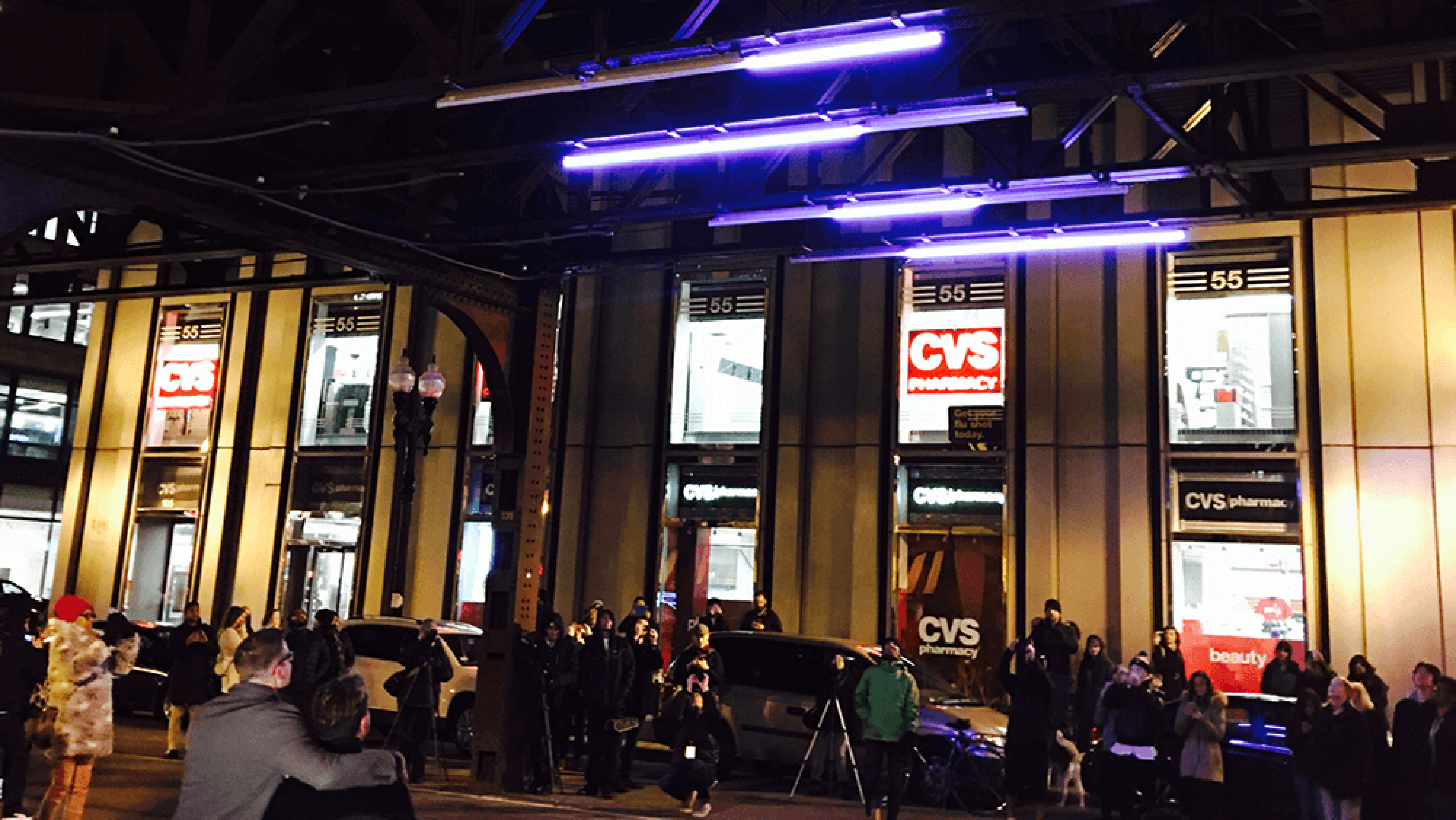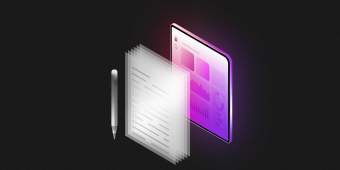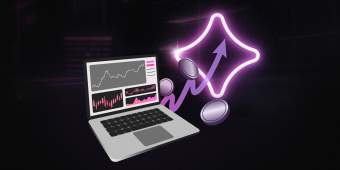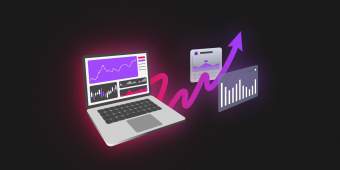As engineers and problem solvers, we like good ideas, but we like good ideas implemented even better. To help somebody coalesce their vision into something that's actionable — that’s a process that’s rewarding for us. Doing a strategy Inception gives us an opportunity to interact with people who are just ridiculously smart in their domain and to add tons of value by forming an actionable plan around their expertise.
We use Inceptions, basically a two-day project kickoff meeting, as a way to understand the problems and possibilities for all types of projects — even if someone has a solid idea of what the product is, we’ll still need to identify and solve design problems. With strategy Inceptions, we’re really working with clients who still don't know what their product is going to be. They’re the minority of inceptions that we typically do, but we seem to encounter a lot of people with business savvy, who think there’s an opportunity to do something better by leveraging technology. In those cases, we’re able to use an Inception to quickly understand the opportunity, then act as the technical partner to figure out a business application. We have a lot of success in those areas.
Why we wanted to work with The Wabash Lights
The folks at Wabash Lights knew there was something to illuminating the space under the Loop L tracks, and they thought if they built it, people would come. But they needed some expertise to help figure out what they were building. We were particularly attracted to this project because of our work in the city. We had already worked on a user experience-focused redesign of the Field Museum’s website, so we have some experience thinking about digital interfaces for physical attractions in the city. Both projects also had a very large focus on people outside of Chicago, with residents accounting for a minority of users. That community betterment, being able to be a part of Chicago, was really attractive to us.
We’re a B, or benefit, corporation, so we can choose do things because they’re going to benefit others, not just because they’re going to pay us. The Wabash Lights was a Kickstarter project, something we were familiar with after our work with Maria Pinto. To get the Inception to a point where they could afford it, we donated almost $20,000 of our services. We bought into the project.
We believe in making Chicago better and more interesting, and the Wabash Lights team was a homegrown group trying to do that. It was also a great connection, a cool opportunity and good visibility for TXI. We knew we wanted to do something, and talked with them about what would be most valuable. A one-day strategy Inception is what we came up with.
How we prepared The Wabash Lights team for an inception
At the time of the Inception, The Wabash Lights already had the idea to illuminate the area under the L tracks on Wabash, and the funding for a beta test. They just had no idea what was next. To keep us focused, I gave them a set of directions we could go with the Inception, each with different deliverables.
- High resolution mockups for what the lights experience app or site could ultimately be. The goal here is to create designs that will help inspire people and raise funding. There wouldn’t be any functionality, but they’d walk away with a design and a style.
- Testing and validating tech tools, the tech stack and the technology architecture. We knew that at some point we're going to have to integrate web or mobile apps with these lights that are stuck on the underside of the L track. We could use this Inception to test Internet of Things examples and figure out how these technologies would talk together.
- Creating a public-facing interactive experience that will engage the public and build on the momentum of the Kickstarter. Building a website would keep the energy up during the six months it took to get the lights up after the Kickstarter.
The Wabash Lights team decided they wanted to go with the design option. They also had some technical challenges they wanted to hash out, like how people could create a lightshow on their phone, then schedule it so they could see it later. They were really focused coming into this on figuring out what the grand vision of this could be, then figuring out what's technically in scope and the tactical solutions.
Like we always do with inceptions, we gave them some homework to do. We had them...
- Send over any mockups or designs they already had
- Force rank their business objectives for the design project
- Force rank the objectives for the development project
- Force rank their priorities for scope, cost, schedule, quality and usability
- List any inspiration behind the Wabash Lights, which helps give us some art direction
- Describe the experience they want users to have when interacting with the Wabash Lights
- Create proto-personas, lighter-weight user personas that let us know who will interact with the Wabash Lights and why, so we have some use cases
How we structured our inception with The Wabash Lights
We went into the inception with two goals: To learn more about them and to create useful deliverables. To do the first, we used a couple of methods.
- The 20-second gut test. This helps us quickly get a sense of their design aesthetic. Based on their response to the homework, we pulled website and app designs that represented all the directions we could go, then captured their immediate reactions.
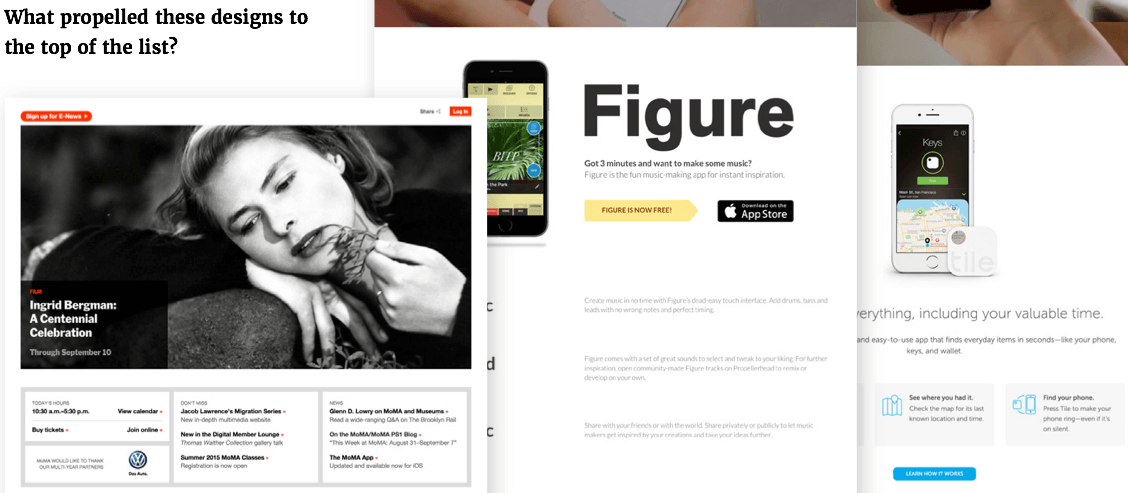
- Adjectify. This is a game we do where we pick 60 different adjectives and have them choose the ones they most associate with their brand. We end up with a set of core brand attributes, and a set of secondary attributes. Together, they help us define the visual direction by telling us what they're trying to evoke in users.
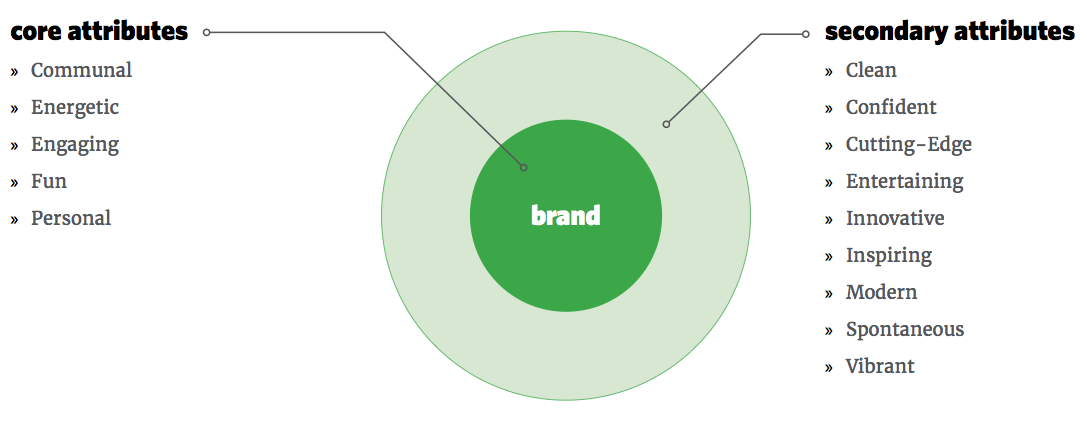
- Interactions. We showed them a series of interactions from other applications and let them react. Down the road, we can take the engagements that were exciting to them and let them pick and choose, “I want this, I don’t like that.” Then we can massage those interactions into an actual application.
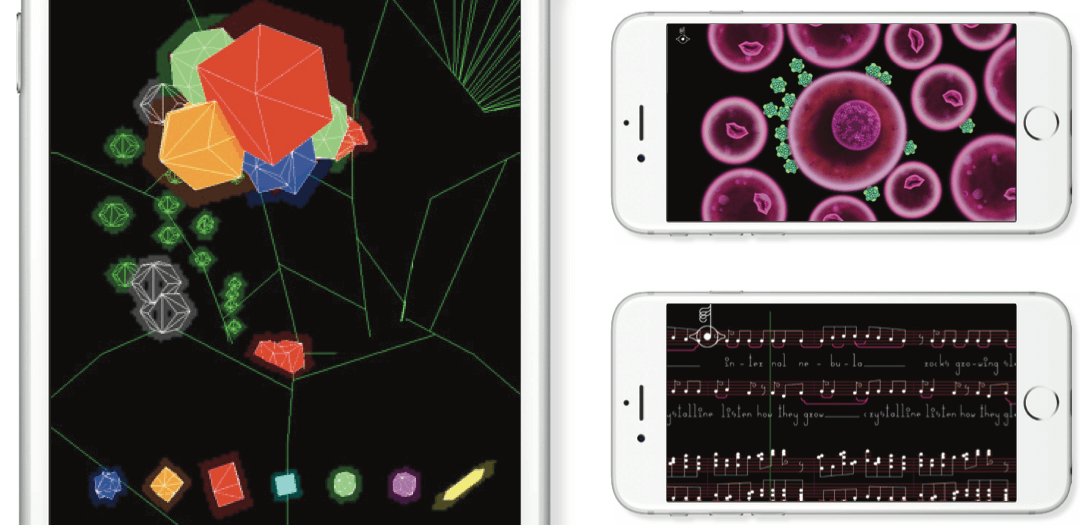
Screenshots from Björk: Biophilia, one of the apps we looked at.
We also spent a lot of time discussing what all this could be. We discussed all the types of users, from a Loop worker to an artist in Brazil, and brainstormed types of applications and engagement strategies that address their different needs. We talked about things like accessibility — how important is it to make sure this works on more than just the latest iPhone? We discussed ways it could be monetized, what sponsorship would look like. Could we have IBM’s Watson design a lightshow as part of a campaign for IBM?
We also discussed how they wanted The Wabash Lights to be identified. It could be used for way-finding, using data to create traffic visualizations or weather reports. It could be very egalitarian, where anyone can control the lights, and even things like polls could be used to visualize how people are feeling about a certain topic. Then there's the artistic side — which is what they originally came in with — to let great artists all over the world use this is a medium, almost like an extension of the Chicago Art Institute. By the end of the inception, they had sort of moved away from that high-minded artist approach and toward an egalitarian model.
Deliverables
We knew going into the inception that having deliverables with immediate value was important to all of us. We also know the timetable on strategy projects is long, so we need deliverables concrete enough that they can be picked up and used in a few months or a few years, whenever the time and funding comes together to get an idea off the ground. Whether it's going to be handed off to another agency to be built or used to raise funds, we knew it had to help define the end result of the Wabash Lights experience.
In addition to helping them hone what they want the main Wabash Lights experience to be, we gave them whole packets of material that they can use going forward. Because funding isn’t in place yet for a full launch, we knew the deliverables had to inspire. So everything we gave them is tailored toward something that can be used in any pitch deck to get people on board.
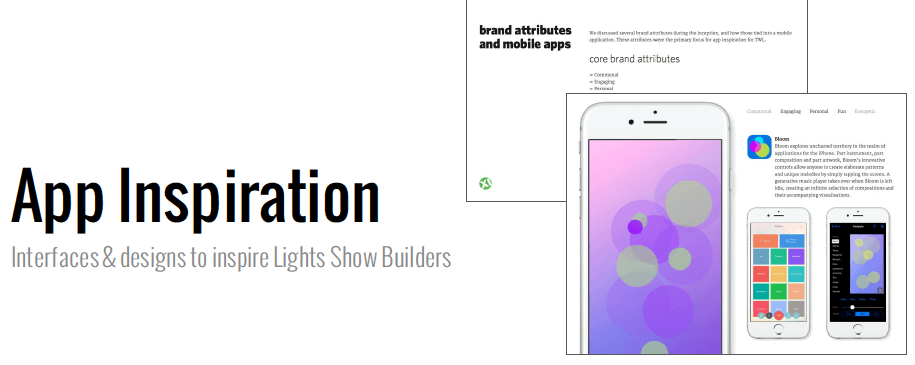
Out of the four methods that we used, we were able to create a framework for talking about the project and the start of a visual identity. They’ll be able to go into a pitch using the right words and the right visual cues to frame their project. And when they do engage a design firm — whether us or another one — this is something where they can immediately go in and say, “We've thought about these things, let's hit the ground running.”
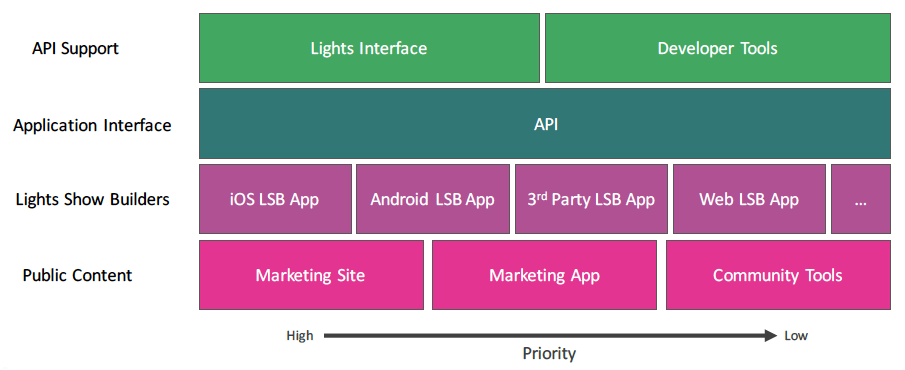
An example structure for The Wabash Lights
We also gave them an idea of how an application that serves the use cases we discussed would be architected. This is the overall big picture architecture of how an app would interact with the lights, how it would interact with any building tools and how it would interact with the public. Then we staged that out for them, so they know what to tackle for a minimum viable product, and what to do for the next phase, etc.
What happens next for The Wabash Lights
After an strategy inception, we stay on as a partner for as long as a project needs us. The Wabash Lights team has had a few follow-up questions, and we'll give them some high-level strategy. When they've had possible partnerships, I talk with the team and the LED manufacturer to assess the feasibility, what might it look like. It becomes an ongoing relationship, just touching base every couple months. When they do get the funding to go to the next stage, they’ll already have the big picture questions answered, and a lot of the tactical ones too, so they can bring something cool to Chicago that much faster.
